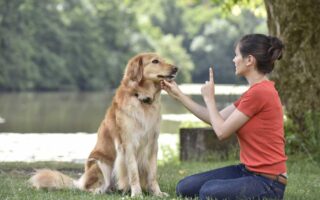Unleashing Joy: A Guide to Simple Dog Tricks
Dogs have long been celebrated as man’s best friend, bringing companionship, loyalty, and an abundance of joy into our lives. But beyond their affectionate nature, our furry friends are also incredibly smart and eager to learn. Teaching your dog simple tricks can deepen your bond, provide mental stimulation, and add a touch of fun to your daily routine. Whether you’re a seasoned dog owner or a novice handler, this article will guide you through a variety of easy-to-master tricks that require minimal equipment and can be taught in everyday settings. So grab some treats, prepare for tail wags, and let’s embark on an adventure of learning and laughter together!
Table of Contents
- Mastering Basic Commands to Enhance Communication with Your Dog
- Engaging Your Pet: Fun and Effective Tricks for Bonding
- Step-by-Step Training Techniques for Lasting Results
- Creating a Positive Learning Environment: Tips for Success
- Q&A
- To Wrap It Up
Mastering Basic Commands to Enhance Communication with Your Dog
To foster a deeper bond with your dog and enhance communication, mastering a few fundamental commands will prove invaluable. Start with basic commands that establish a foundation for understanding. Focus on the following keywords, ensuring to use a firm yet positive tone to encourage your pet’s willingness to learn:
- Sit: An essential command that teaches your dog to pause and focus.
- Stay: This command enhances impulse control, ensuring your dog remains in place.
- Come: Crucial for safety, this command helps in recalling your dog to you quickly.
- Leave it: A useful command that teaches your dog to avoid unwanted items or distractions.
Training sessions should be short and enjoyable, integrating treats or toys as positive reinforcement. A simple table can help break down a training schedule:
| Day | Command | Duration |
|---|---|---|
| 1 | Sit | 5 minutes |
| 2 | Stay | 5 minutes |
| 3 | Come | 5 minutes |
| 4 | Leave it | 5 minutes |
By consistently practicing these commands, your dog will not only learn but also develop trust in your direction. Remember to celebrate small achievements with praise, as this strengthens your dog’s confidence and willingness to engage in further learning.
Engaging Your Pet: Fun and Effective Tricks for Bonding
Engaging with your dog through tricks not only strengthens your bond but also keeps their mind active and entertained. Start with basic commands that can be transformed into fun tricks. Consider teaching your furry friend to:
- Sit Pretty: Encourage your dog to balance on their hind legs while sitting.
- Spin: Use a treat to guide them in a circle.
- Roll Over: Gently encourage them to roll onto their side and then completely over.
- Play Dead: A fun trick where your dog can dramatically flop over after a ”bang” command.
As you teach these tricks, positive reinforcement is key. Use a consistent reward system to motivate your pup. You can create a simple scoreboard for tracking their progress:
| Trick | Days to Master | Favorite Treat |
|---|---|---|
| Sit Pretty | 3 | Peanut Butter |
| Spin | 2 | Cheese |
| Roll Over | 5 | Chicken Treats |
| Play Dead | 4 | Beef Jerky |
By engaging in training sessions filled with laughter and rewards, you’ll create cherished memories and a relationship built on trust and fun!
Step-by-Step Training Techniques for Lasting Results
To achieve lasting results with your dog’s training, it’s crucial to break down each trick into manageable steps that promote understanding. Start with clear communication: use consistent verbal commands and hand signals so your dog can associate the cues with the desired action. For example, when teaching “sit,” pair the verbal command with a gentle upward motion of your hand. Incorporate positive reinforcement by rewarding your dog with treats or praise immediately after they successfully perform the trick. This immediate feedback solidifies the behavior and strengthens your bond with your furry friend.
Next, practice patience and repetition. Allow your dog to fail and learn at their own pace, as this fosters confidence and understanding. Utilize short training sessions of about 5-10 minutes to keep their attention focused. You can create a simple training schedule to track progress and maintain consistency:
| Day | Trick | Reward |
|---|---|---|
| Monday | Sit | Small treat |
| Wednesday | Stay | Praise |
| Friday | Roll Over | Playtime |
By following this structured approach, you create a solid foundation for your dog’s learning. Consistency is key, so be sure to maintain the same routine while also introducing new tricks gradually to keep the sessions fun and engaging.
Creating a Positive Learning Environment: Tips for Success
Fostering a supportive atmosphere is essential for your dog’s learning journey. When teaching simple dog tricks, consider creating a designated training space that is free from distractions. This area should be comfortable for your pet, allowing them to focus solely on the task at hand. Incorporate essential elements such as:
- Positive Reinforcement: Use treats and praise to reward your dog.
- Patience: Remember, learning takes time; don’t rush your pup.
- Consistency: Reinforce commands regularly to build familiarity.
- Short Sessions: Keep training sessions brief and engaging, around 5 to 10 minutes.
Additionally, maintaining an encouraging demeanor can significantly impact your dog’s ability to learn. Dogs can be sensitive to human emotions, so keep the mood light and fun. Use varied tones while commanding to maintain their interest and enthusiasm. Here’s a quick overview of some simple tricks to teach:
| Trick | Description |
|---|---|
| Sit | Teach your dog to lower their rear onto the ground. |
| Shake Hands | Encourage your dog to lift a paw and place it in your hand. |
| Roll Over | Guide your dog to roll onto their side and complete a full roll. |
| Play Dead | Train your dog to lie still when commanded to ”play dead.” |
Q&A
Q1: What are some easy dog tricks that beginners can teach their pets?
A1: Teaching your dog tricks can be a fun bonding experience! Some easy tricks to start with include “Sit,” “Shake Hands,” “Lie Down,” and “Roll Over.” These tricks not only stimulate your dog’s mind but also reinforce basic obedience, setting the stage for more advanced tricks in the future.
Q2: How do I know when my dog is ready to learn a new trick?
A2: Dogs typically show readiness for learning when they are attentive and eager to engage in activities. Start with short training sessions, ideally when your dog is hungry or in a playful mood. If your dog is focused, wagging its tail, or approaching you with enthusiasm, it’s a good sign they’re ready for a new challenge!
Q3: What is the best way to reward my dog during training?
A3: Positive reinforcement is key! Using treats, praise, or playtime can be very effective. Try to use high-value treats that your dog loves, such as small pieces of chicken or cheese. Remember to reward your dog immediately after they perform the desired behavior to help them associate the trick with the reward.
Q4: How long should training sessions last?
A4: Keep training sessions short and sweet—around 5 to 10 minutes each is ideal. Dogs have shorter attention spans, so it’s better to have several short sessions throughout the day rather than one long one. This keeps your dog engaged and makes learning feel more like play than work.
Q5: What if my dog doesn’t seem to understand the trick?
A5: Patience is crucial! If your dog isn’t picking up a trick, try breaking it down into smaller steps. Use clear commands and gestures, and remember that every dog learns at its own pace. If they get frustrated, take a break or switch to another trick to keep their enthusiasm high.
Q6: Are there any tricks I should avoid teaching my dog?
A6: While there are no specific tricks that are off-limits, some tricks require more physical skill or may not be suitable for all dogs. For instance, tricks that involve jumping or flipping could be risky for older dogs or those with health issues. Always assess your dog’s physical condition and adjust your training accordingly.
Q7: How can teaching tricks benefit my dog’s overall behavior?
A7: Teaching tricks can have numerous benefits beyond just impressing friends! It strengthens your bond, builds trust, and provides mental stimulation. Moreover, regular training sessions can help curb unwanted behaviors by channeling your dog’s energy into constructive activities.
Q8: Is it possible to teach my dog more advanced tricks after the basics?
A8: Absolutely! Once your dog masters the basics, you can gradually introduce more advanced tricks like “Play Dead,” “Fetch,” or “Back Up.” Just ensure your dog is having fun and remains motivated. Challenging them with new tricks will keep their training exciting and rewarding.
With these guidelines, you’ll be well on your way to teaching your dog some simple yet delightful tricks! Happy training!
To Wrap It Up
As we conclude our exploration of simple dog tricks, it’s clear that teaching your furry companion these behaviors not only enhances their well-being but also strengthens the bond you share. These delightful skills, from the classic sit and stay to the charming roll over and shake, offer opportunities for fun and engagement in your daily routine. Remember, patience and consistency are key; every pup learns at their own pace. So grab some treats, unleash your creativity, and embark on this rewarding journey together. With a little time and enthusiasm, you’ll discover that the joy of teaching and the pride of accomplishment are just as delightful as the tricks themselves. Now it’s time to gather your pup, start practicing, and watch the magic unfold!


